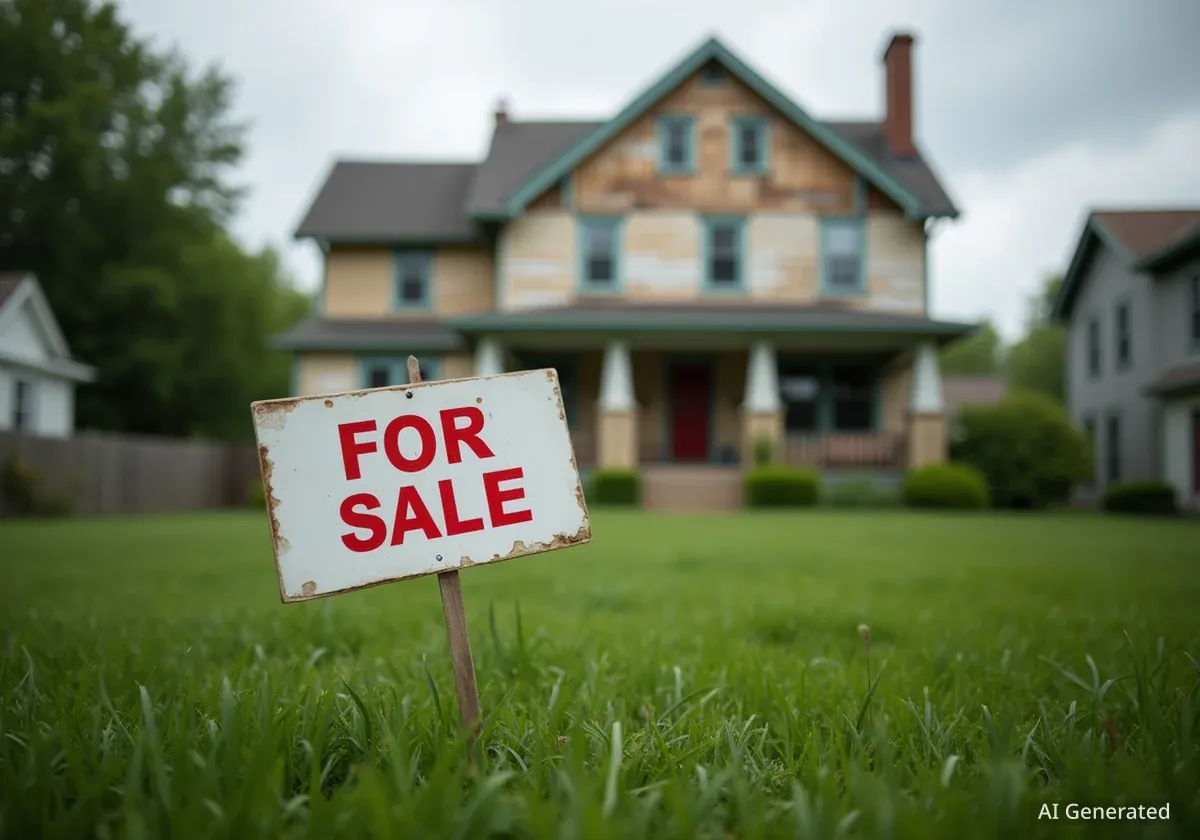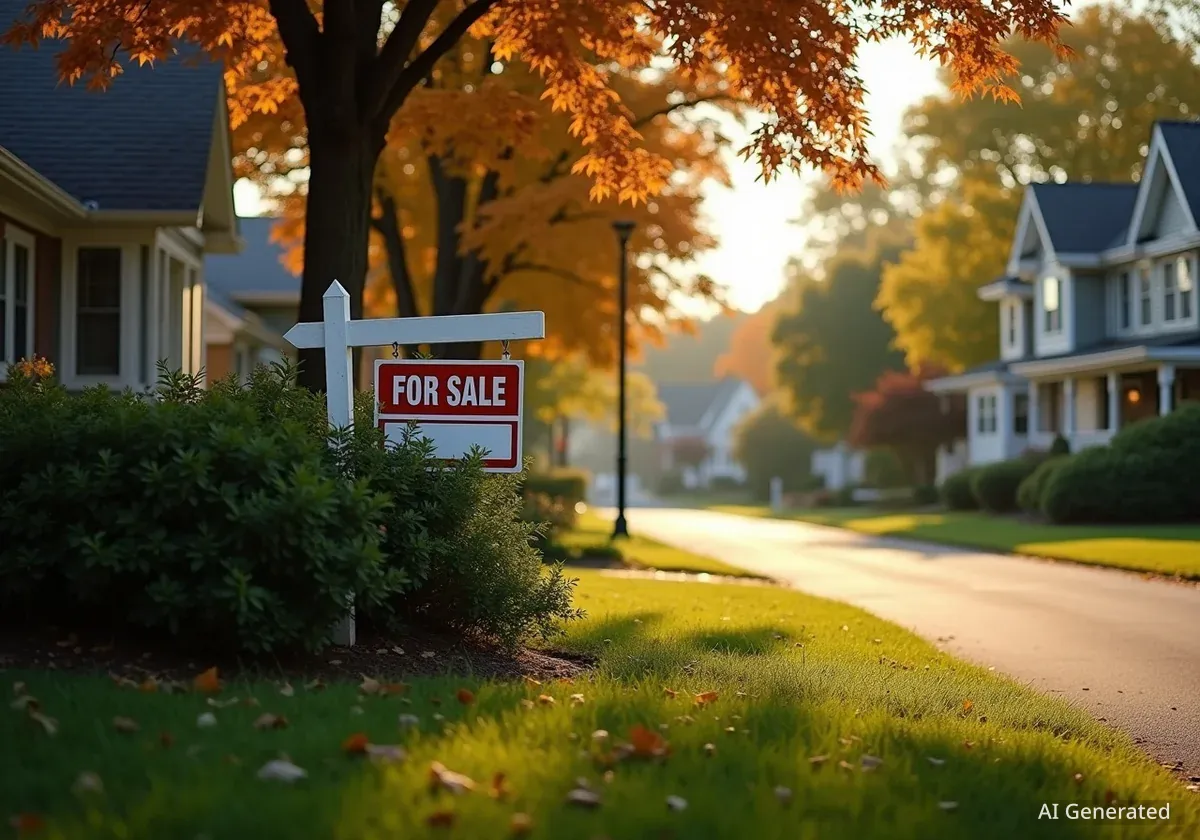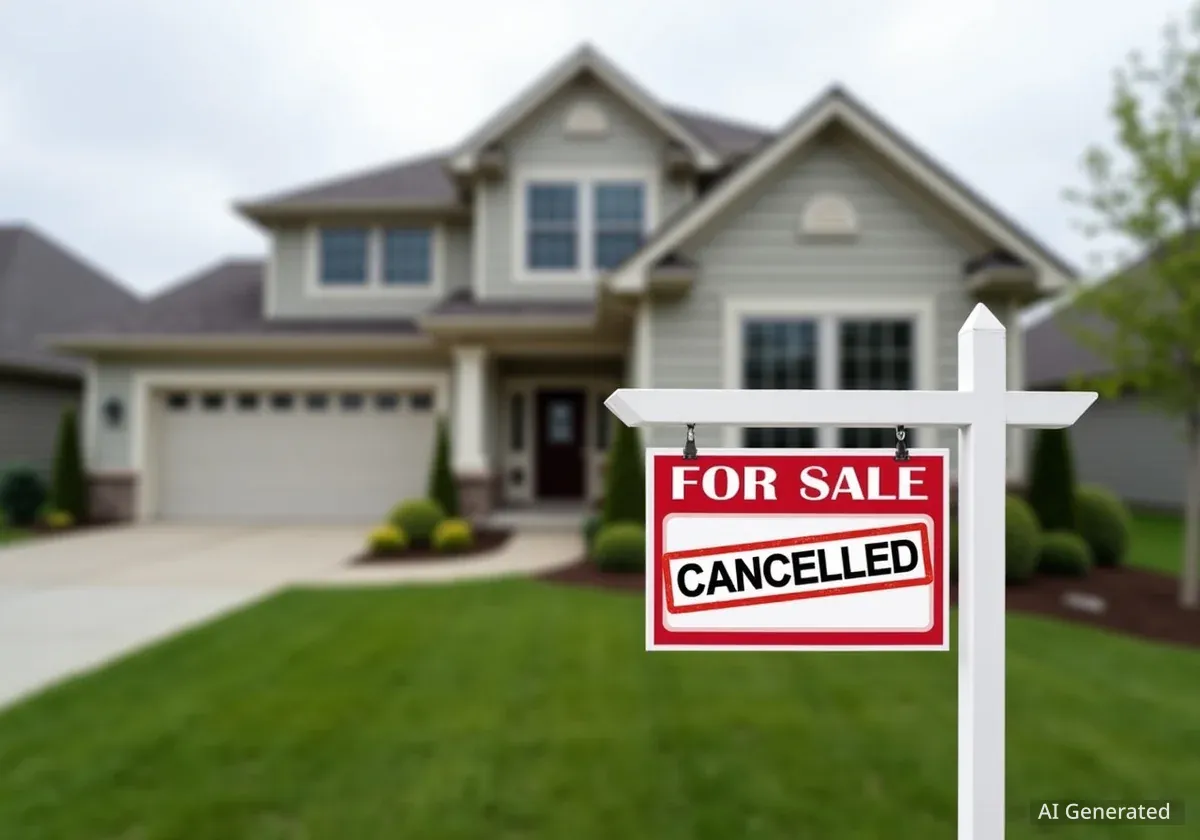The United States housing market is experiencing significant cooling, with price growth slowing to near zero on a national level and nearly half of all states reporting price declines, according to a recent analysis. This trend, combined with the slowest rent growth in 14 years, suggests increasing pressure on the market that could lead to further price reductions in the coming year.
Real estate analyst Nick Gerli, founder of the analytics firm Reventure App, described the current conditions as a "disinflation and deflationary vortex." This indicates a market where price increases have slowed dramatically, and in many areas, prices are actively falling.
Key Takeaways
- National home price growth has slowed to nearly flat year-over-year, a condition known as disinflation.
- Home prices are actively declining in almost 50% of U.S. states, indicating deflation in those markets.
- Rent growth has fallen to its slowest pace in 14 years, signaling weakening demand and rising inventory.
- Housing affordability remains a major challenge, with buyers spending 37-38% of their income on housing debt.
- Markets that boomed during the pandemic, particularly in Florida and Texas, are now seeing the most significant price corrections.
A Market Divided by Disinflation and Deflation
The U.S. housing market has entered a period of significant adjustment after years of rapid price increases. The primary drivers include persistent affordability issues, high borrowing costs, and rising expenses like home insurance, which have pushed many potential buyers to the sidelines.
This reduced demand has led to a notable increase in the number of homes for sale. According to data from Redfin, there were over 2.1 million homes available in August, an increase of 10.5% compared to the previous year. At the same time, sales fell by 2.2%, and properties remained on the market for an average of eight days longer before selling.
Despite the slowdown, the national median home price in August was $439,198, a 1.5% increase year-over-year. However, this is one of the smallest gains recorded in recent months. Gerli identifies this slowdown in price growth as disinflation—a state where prices are still rising, but at a much slower rate than before.
Understanding Market Terminology
Disinflation refers to a slowing in the rate of price inflation. In housing, it means home prices are still increasing year-over-year, but the pace of growth is declining. Deflation, on the other hand, is an actual decrease in prices, where homes sell for less than they did in the previous year. Both are now occurring simultaneously in different parts of the U.S. housing market.
Regional Differences Tell a Complex Story
The national data masks significant variations between different regions. Gerli emphasizes that the market correction is not uniform across the country. Areas that experienced extreme growth during the pandemic are now facing the most substantial downturns.
Former Boomtowns Face Price Drops
States like Florida and Texas, which saw a massive influx of buyers and soaring prices, are now leading the correction. These markets have the largest surplus of inventory and are experiencing year-over-year price declines, a clear sign of deflation.
- In Florida, the median sale price in August was $403,100, down 0.13% from the previous year.
- In Texas, the median price was $345,900, representing a 0.59% year-over-year decrease.
These figures, while seemingly small, represent a major reversal from the double-digit price growth seen in these states just a couple of years ago. The shift gives remaining buyers more options and increased negotiating power.
Northeast and Midwest Markets Remain Strong
In contrast, many metropolitan areas in the Northeast and Midwest continue to face a housing shortage. With inventory still tight, these markets have not experienced the same downward pressure. As a result, home prices in these regions are still growing, though the pace may be moderating.
The Rental Market Adds to Concerns
A key factor worrying analysts like Gerli is the simultaneous slowdown in the rental market. Weakness in both the for-sale and rental sectors suggests a broader decline in housing demand.
"The rental market has taken a big downward shift in the last six months," Gerli stated in a YouTube video analysis. "We are actually seeing the lowest single-family rent growth we’ve seen in 14 years going back to the end of the last housing crash."
According to property data firm Yardi Matrix, the nation recorded just 0.3% rent growth last year, the slowest rate since 2010. This trend has continued, indicating that inventory is accumulating in both sectors of the housing market.
Rental Market Corrections by City
Data from Reventure App shows steep rent declines over the past three years in cities that saw pandemic-era booms:
- Austin, Texas: -18.3%
- Fort Myers, Florida: -15.3%
- Colorado Springs, Colorado: -12.5%
Meanwhile, some Northeast and Midwest cities saw continued rent growth:
- Hartford, Connecticut: +11%
- Chicago, Illinois: +10%
- Omaha, Nebraska: +9%
Gerli explained the significance of this dual downturn. "When you see the rental market also starting to experience the downturn at the same time as the for-sale market, it is telling you there’s weakness, there’s disinflation and deflationary pressure going on," he said.
Implications for Buyers and Renters
The core issue for the housing market remains affordability. For homebuyers, the financial strain is reaching historic levels. According to Gerli, households purchasing a home now must allocate between 37% and 38% of their gross income to cover their debt.
"That’s one of the highest debt-to-income ratio levels we have ever seen," he noted, explaining that this is severely limiting buyer demand.
In the rental market, affordability is less severe, but new challenges are emerging. Gerli points to lower population growth, reduced immigration, and signs of economic weakness in hiring as factors that are now dampening rental demand.
Adding to the pressure, some investors are reportedly selling their properties because the investments are no longer financially viable in the current high-cost environment. This convergence of reduced demand from homebuyers, renters, and investors is creating the disinflationary conditions that Gerli believes will ultimately benefit most people by improving affordability over the long term.





